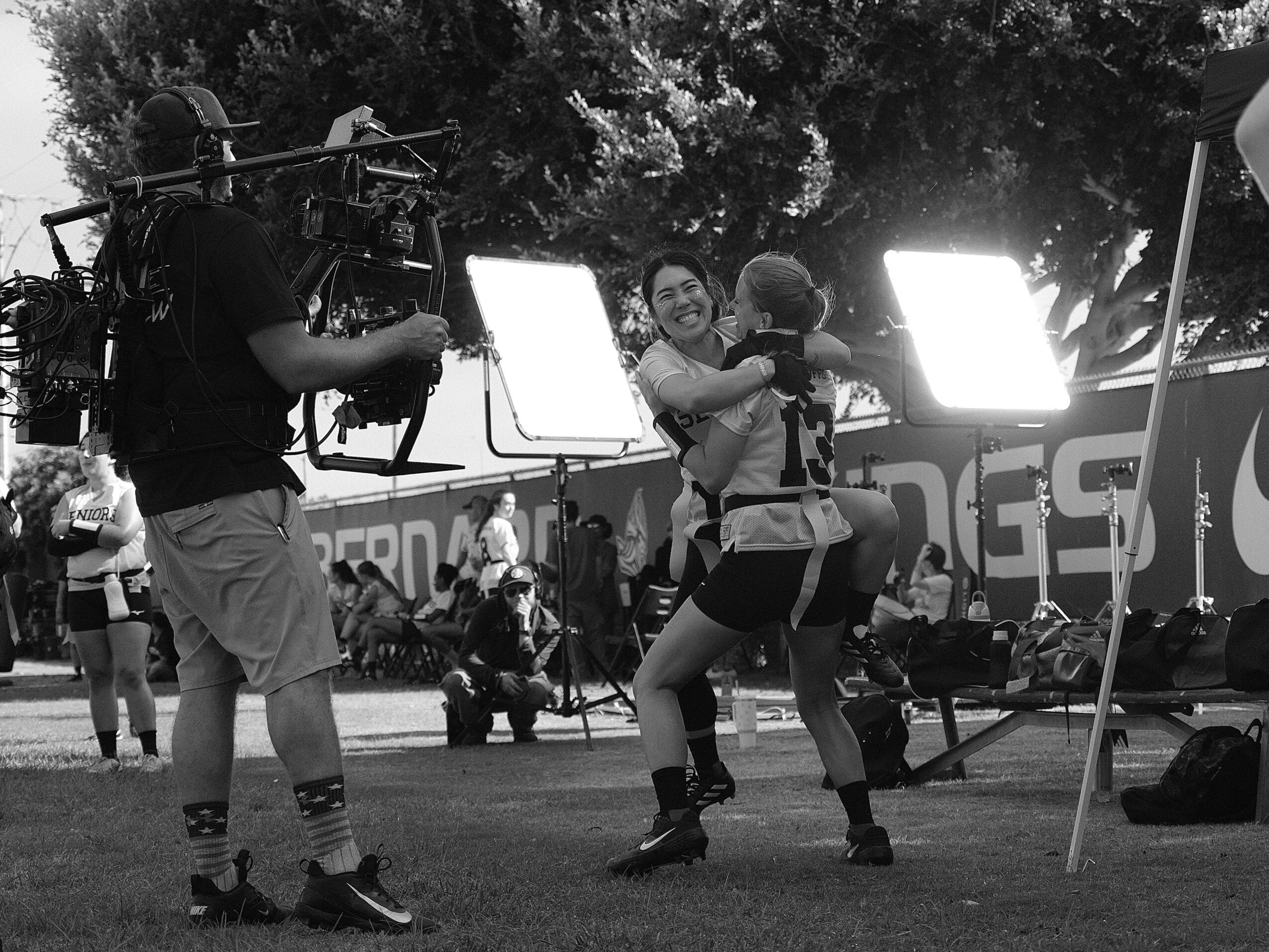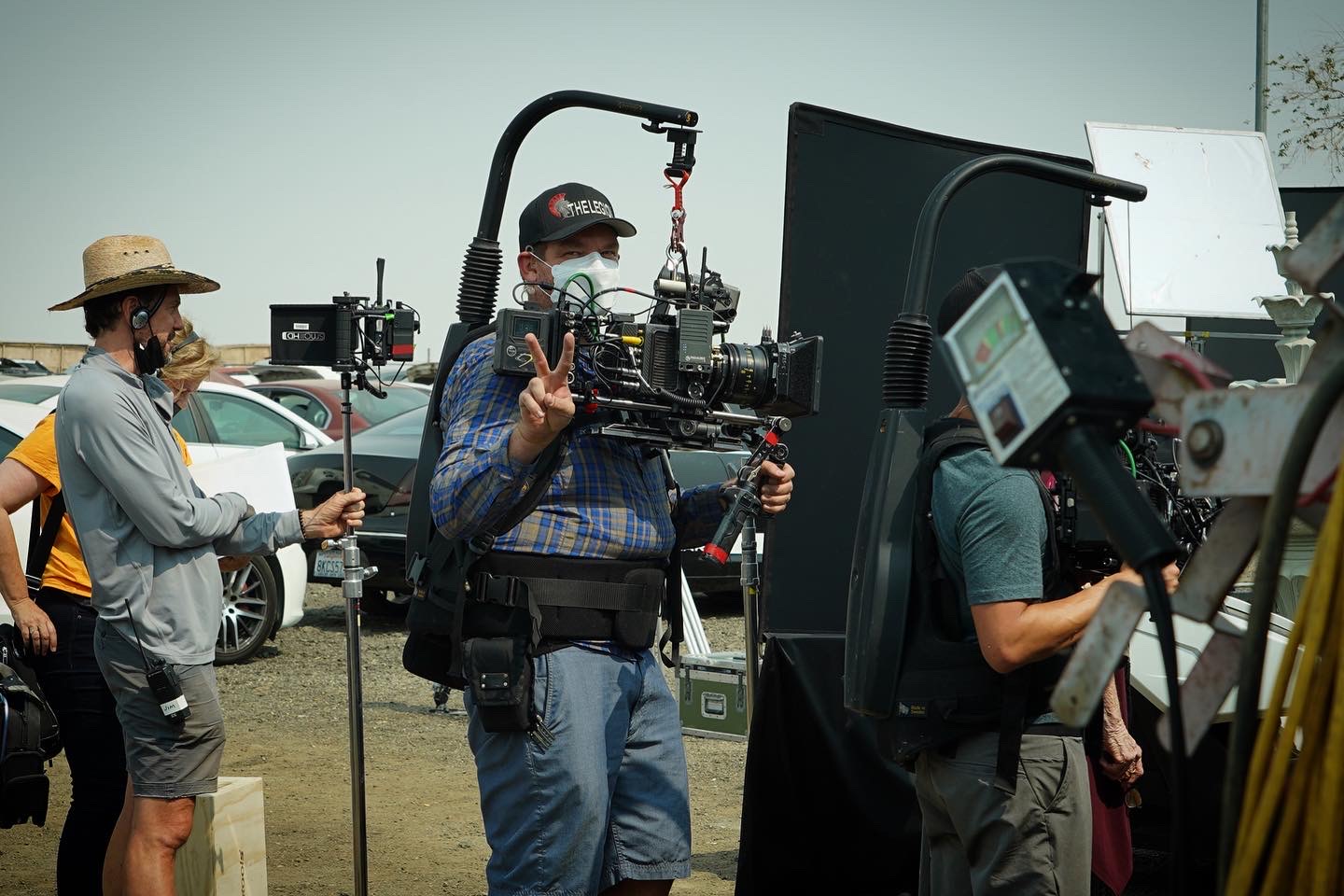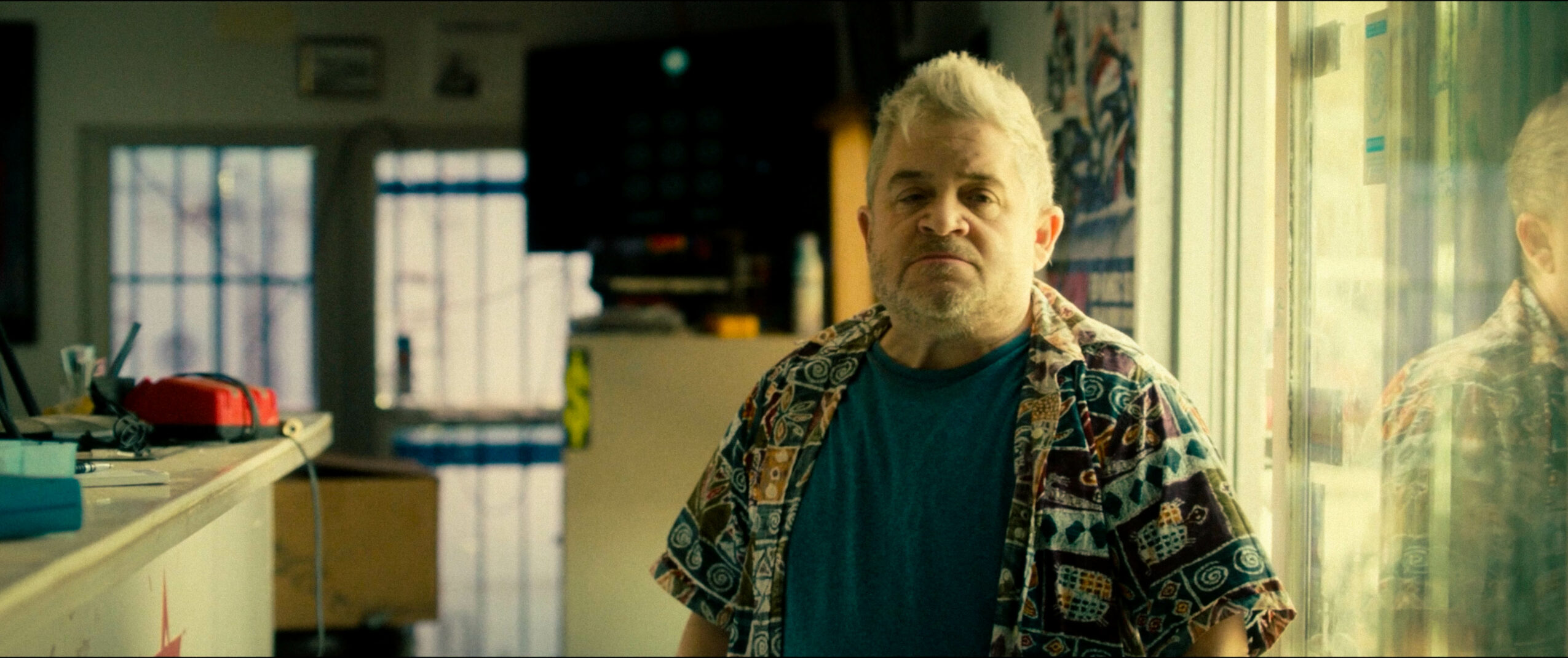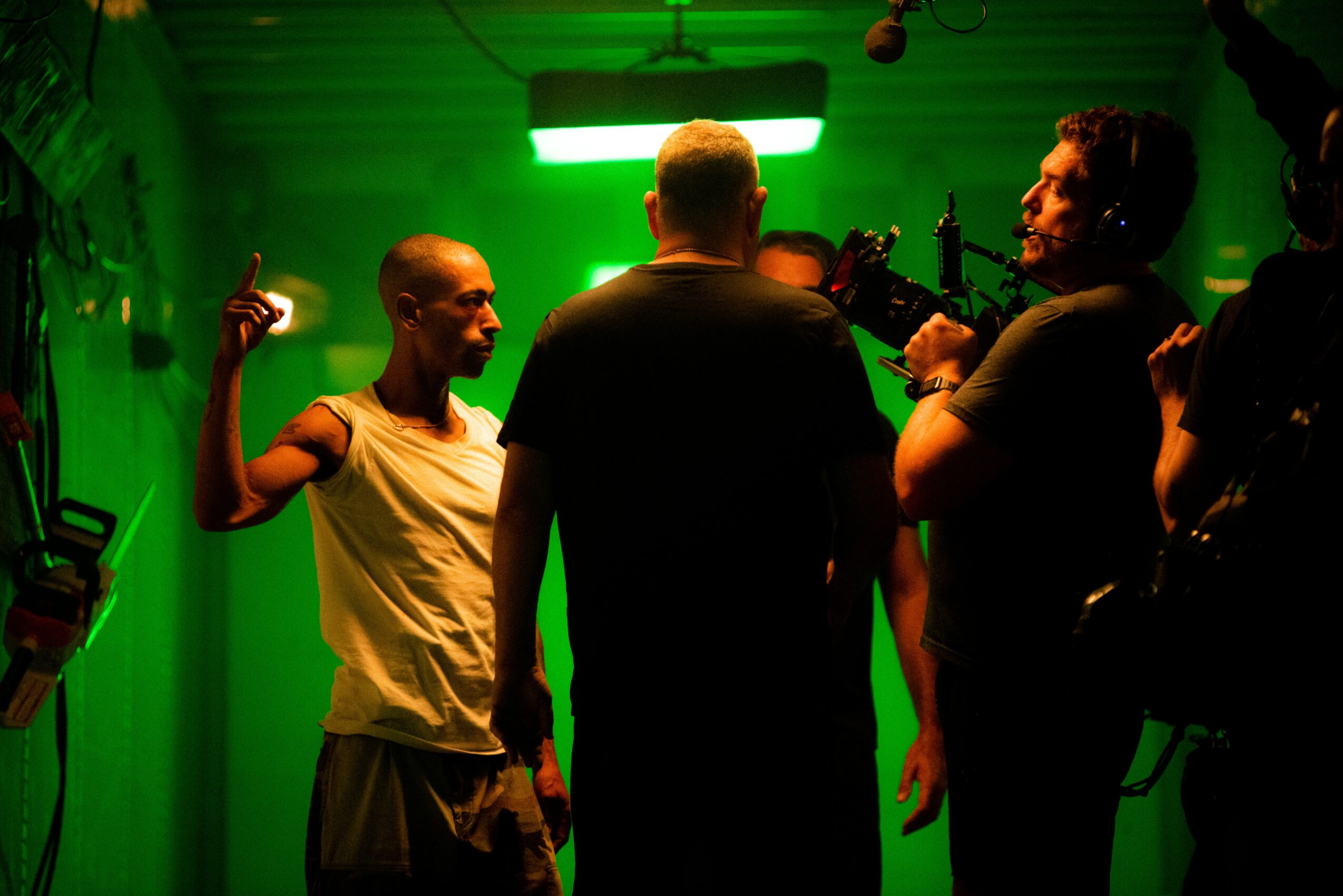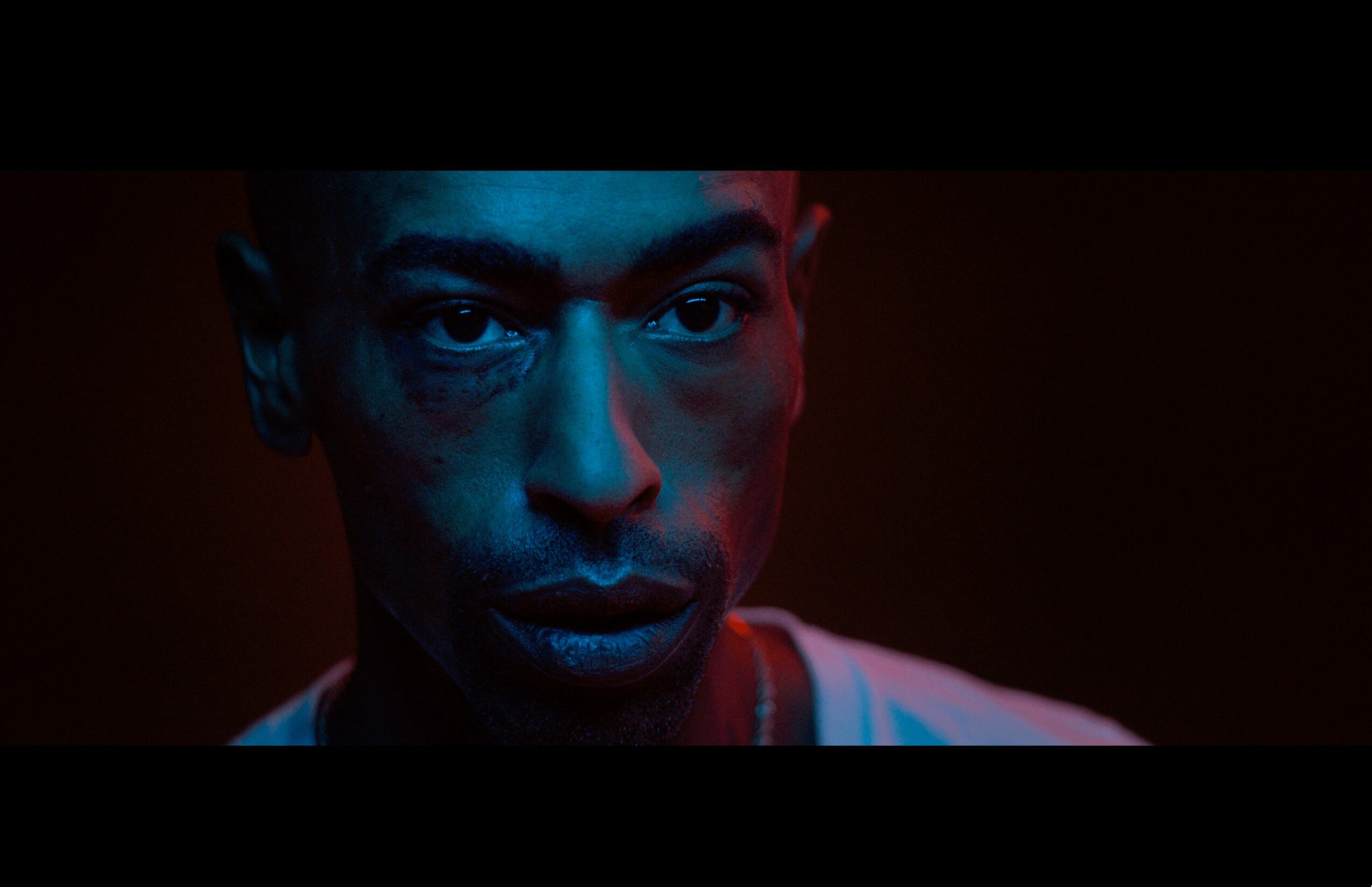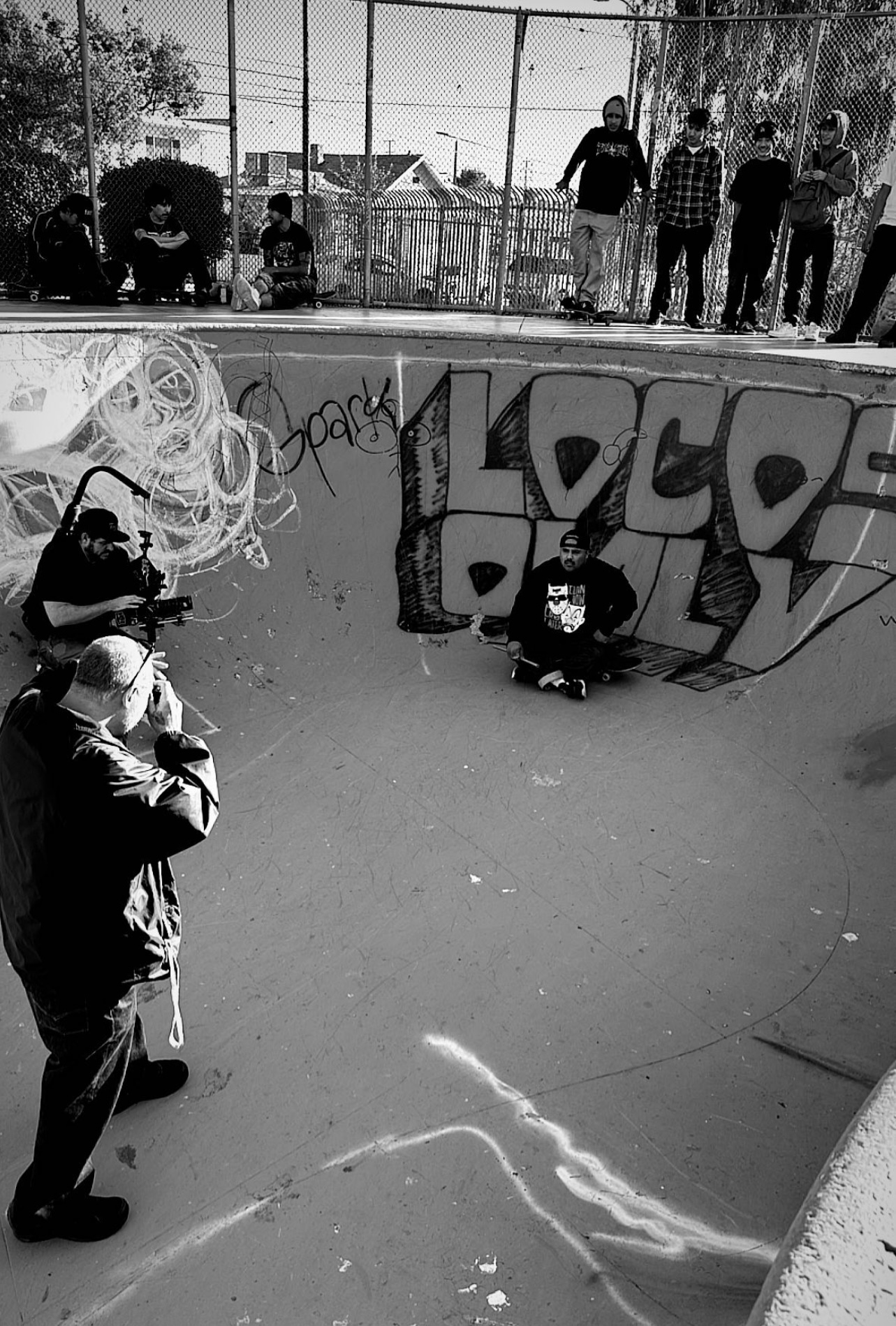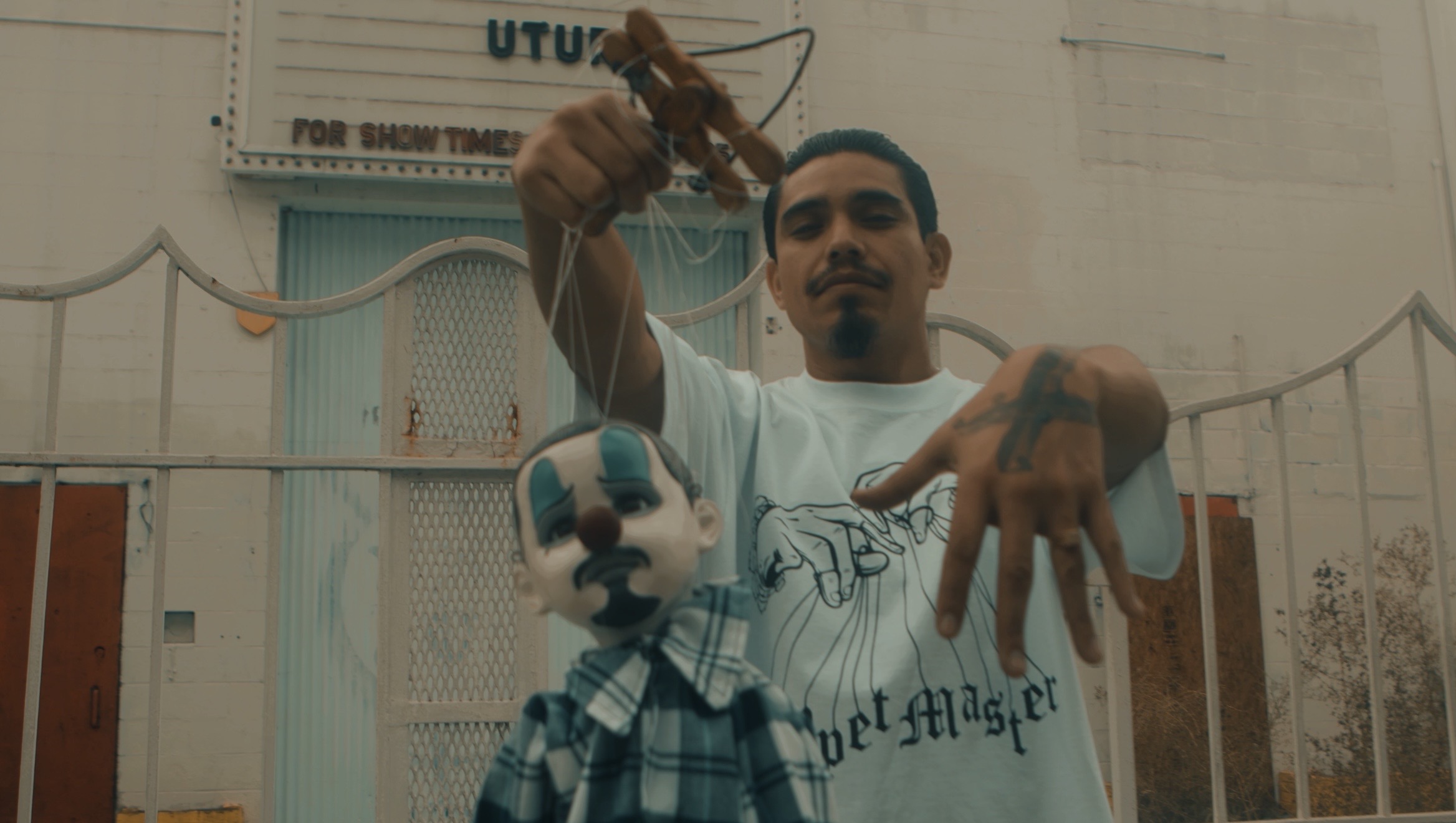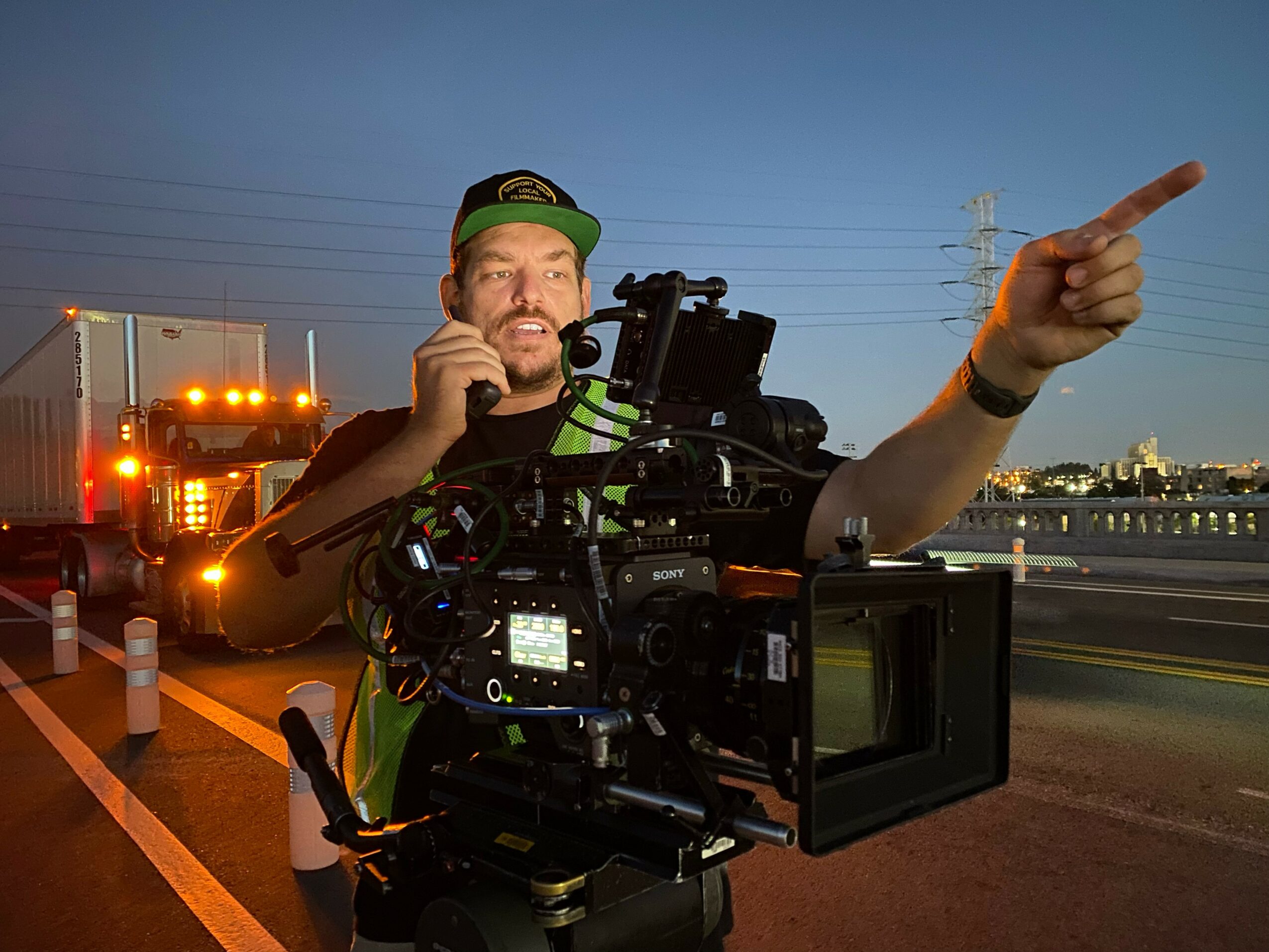

Today we’d like to introduce you to Chris Cuthbert.
Hi Chris, can you start by introducing yourself? We’d love to learn more about how you got to where you are today?
My passion for filmmaking was sparked at a young age, watching the behind-the-scenes of Independence Day, where the magic of practical effects and filmmaking came alive for me. Seeing miniature explosions, camera rigs, and the collaboration behind the spectacle made me realize that filmmaking wasn’t just entertainment; it was a symphony of creativity, problem-solving, and storytelling. That moment planted a seed that never stopped growing. I knew then that I wanted to be part of this world, helping shape the images that make people feel something.
Before I ever picked up a camera, sports shaped the way I saw the world. I played football, basketball, and baseball growing up, but it was at the University of San Diego, playing defensive line, where I truly learned what it meant to rely on a team. In the trenches, every play depends on trust, communication, and the ability to perform under pressure qualities that would later mirror life on set. Football taught me how to adapt quickly, to stay calm when things broke down, and to give everything for the person next to me. It also gave me a deep respect for preparation and discipline, the same qualities that make or break a shoot day.
Those lessons naturally carried over into my filmmaking journey. On a film set, just like on the field, success depends on how well you work with others toward a shared goal. You learn to read the rhythm of your team, the director’s pacing, the gaffer’s instincts, the camera crew’s flow, and when everyone’s in sync, the energy becomes electric. That spirit of collaboration, of lifting each other up to execute a vision larger than any one person, has become the backbone of how I lead as a Director of Photography.
At Chapman University’s Dodge College of Film and Media Arts, where I earned my Master of Fine Arts in Film Production with a focus in Cinematography, I gained a solid foundation in film history, lighting, and camera movement. But the true turning point came from the mentors who guided me beyond theory and into artistry, Alice Brooks ASC and Pete McCaffrey. SOC They didn’t just teach me how to use light or compose a frame; they showed me how to feel it, how to bring purpose and emotion to every creative choice.
Alice taught me to see light not just as illumination but as emotion. She carried a sense of wonder into every project, and her curiosity was contagious. Watching her work was like watching someone paint with photons, each decision deliberate and every nuance rooted in the story. She pushed me to think beyond aesthetics and find truth in the way light interacts with character and space. Alice inspired me to chase beauty even in imperfection, to find the cinematic in the everyday, and to trust my instincts when crafting mood and atmosphere. From her, I learned that the best images don’t simply look beautiful; they feel alive.
Pete, challenged me to step into leadership with confidence and clarity. He taught me that precision doesn’t stifle creativity; it amplifies it. His approach to cinematography was equal parts craft and mindset: prepare thoroughly, communicate clearly, and respect every department’s contribution. Pete had a remarkable ability to turn obstacles into opportunities, to stay calm when things went wrong, and to lead through collaboration rather than authority. He helped me understand that the role of a cinematographer isn’t just to capture the image; it’s to guide a team toward a unified vision. His mentorship shaped how I approach every set with confidence, empathy, and the belief that great images come from great teamwork.
After graduating, I was fortunate to join Local 600, the International Cinematographers Guild. It was a defining moment for me, a milestone that represented not just a professional credential but a sense of belonging to a larger creative community. Being part of the union surrounded me with peers and mentors who shared the same deep respect for the craft, people who spoke the same visual language and understood the discipline it takes to make great work.
Shortly after, I achieved another personal goal by becoming a member of the Society of Camera Operators (SOC) before the age of thirty. It was something I had set my sights on early in my career, a benchmark that reminded me how far dedication and persistence could go. Joining the SOC made me feel firmly rooted in the industry, working alongside others who were equally passionate and driven to push visual storytelling forward. Both milestones marked the transition from aspiring cinematographer to fully immersed craftsman, part of a network of artists who continuously inspire and challenge me to grow.
Since then, I’ve had the opportunity to collaborate on a range of projects that continue to shape my creative voice, from the intimate realism of Edges to the stylized grit of Shatterbelt, from the raw documentary energy of Clown Now, Cry Later to the vibrant movement and emotion of Powderpuff. Each film has taught me something new about how light, lens, and rhythm come together to serve the story. Whether I’m working on narrative films, branded content, or documentaries, my goal is always the same: to find honesty in the image and to craft visuals that connect people to emotion.
Would you say it’s been a smooth road, and if not what are some of the biggest challenges you’ve faced along the way?
It definitely hasn’t been a smooth road, but I don’t think it’s supposed to be. Every challenge along the way has shaped who I am both as a person and as a Director of Photography.
Early on, I thought my path was going to be in sports. I always believed I was headed toward a professional career in football, hopefully the NFL. But after dislocating my kneecap for the third time, I had to face the reality that it wasn’t going to happen. That moment forced me to pivot and rethink everything I had built my identity around. Suddenly, I had about forty hours a week that used to belong to training, and I didn’t know what to do with it. That’s when I picked up a still camera for the second time since high school, and something clicked. What started as a way to fill time became a new passion, and eventually, the thing that completely redirected my life.
Leaving film school, I had the same feeling many filmmakers do. You think you’re ready to go shoot your first feature, but in reality, you’re starting all over again from square one. Breaking into the industry is hard. It takes persistence, thick skin, and a willingness to work harder than anyone else in the room. I didn’t have any family connections in film. My parents weren’t in the business, and I didn’t have any uncles or siblings to call for a favor. I was building from the ground up completely on my own.
In those early years, I sometimes worked for little more than gas money. At the time, it was stressful. I was living job to job, not knowing when the next one would come. But looking back, those moments were some of the most formative of my career. They taught me humility, perspective, and how to treat people on set. I learned firsthand the importance of kindness and respect because I knew exactly how it felt to be on the bottom rung.
Another challenge that came later in my career was navigating transitions between roles. Moving from camera assistant to operator, and eventually from operator to director of photography, felt like starting over each time. The industry tends to label you by your last position, so when you try to level up, not everyone is willing to see you in a new light. You lose some of the regular jobs and familiar relationships you’ve built because you’re chasing something bigger. It’s a leap of faith that can be as uncomfortable as it is necessary.
Even now, at every stage, I’ve realized that the struggle doesn’t really go away. It just changes shape. There’s this idea that once you “make it,” everything becomes easy, but I’ve found the opposite to be true. Every level comes with new challenges, new expectations, and new forms of uncertainty. It’s a constant cycle of preparing, adapting, and trusting that the next opportunity will come.
One of the biggest lessons I’ve learned is to put yourself in as many awkward or uncomfortable situations as possible because that’s where the real growth happens. The more you challenge yourself, the more you build the instincts to stay calm and make the right decisions when those situations inevitably come around again. In this business, comfort rarely leads to progress. Every time I’ve stepped into something that scared me a little, it’s led to the biggest leaps forward in my career.
The biggest takeaway from all of it is that you can’t control your career. You can only guide it. You have to surrender a little, stay open, and let the work and relationships unfold in ways you can’t always predict. The film industry doesn’t owe anyone a path, but it rewards those who show up with passion, patience, and resilience. For me, every setback, every pivot, and every long night has been part of the story, and I wouldn’t trade it for anything.
Thanks – so what else should our readers know about your work and what you’re currently focused on?
As a director of photography, I specialize in visual storytelling that bridges emotional truth with cinematic precision. My work spans narrative, documentary, and branded content, and what connects all of it is my desire to create imagery that feels both human and intentional. I’m drawn to stories that challenge form, that require a mix of instinct and craft to capture something honest within controlled design.
Every project I’ve taken on has brought unique challenges and growth, each one deepening my understanding of visual storytelling.
In Edges, we tackled the challenge of blending lighting and camera movement within the constraints of a real apartment setting. Working in small spaces required us to be extremely thoughtful about how and where light was placed, shaping mood and depth without overwhelming the environment. The collaboration with Brandon Constantine brought a Hollywood-esque energy, blending action and intimacy to craft a compelling world that felt both grounded and elevated.
Shatterbelt was a testament to creativity under constraints. With a minimal crew and no traditional lighting, we relied on natural light and strategic timing to shape the film’s tone. Working with Jim Birkin, we focused on pulling authentic performances and creating a gritty, compelling aesthetic. The project was led by Oswell Patterson, who not only starred as the main lead but also helped produce the film. His dedication and creative vision elevated the production on every level. The film’s success at South by Southwest became a defining moment that reminded me that vision and story always outweigh budget and scale.
Documenting Clown Now, Cry Later was an exercise in authenticity and grit. Collaborating with Estevan Oriol, we brought the raw essence of street photography into the documentary, shooting on 16mm Bolex to convey a tactile, unfiltered texture. That choice rooted the film in truth, reflecting Estevan’s eye for humanity and the lived experience behind every frame.
Powderpuff merged my love for sports with the art of storytelling. Using a gimbal, we immersed the camera directly in the action, making the audience feel part of the game. Collaborating with Chelsea Watkins and Olivia Kuan, we created a proof of concept that showcased both athleticism and heartfelt narrative, an energetic blend of movement, teamwork, and emotion that captured the spirit of competition and connection.
These projects, each distinct, have enriched my journey, blending technical skill with artistic vision. They’ve taught me the importance of collaboration, adaptability, and the pursuit of authentic storytelling.
In every aspect of my career, the blend of technical precision and artistic expression has been vital. I’ve learned that the heart of filmmaking lies in collaboration, in bringing together diverse perspectives and maintaining a sense of childlike wonder. As a director of photography, my goal is always to push the story forward, merging the technical with the creative to craft compelling and emotionally resonant narratives.
What sets me apart is the combination of my discipline from sports, my curiosity for human stories, and my commitment to building genuine creative partnerships. I’m proud of the work I’ve done, but even more proud of the people I’ve done it with. At the end of the day, my job is to translate feeling into light and to create images that not only look beautiful but truly mean something.
Looking ahead, I want to continue expanding my work into larger narrative features and limited series television. I’m drawn to stories that live in the space between realism and cinematic poetry, projects that challenge audiences emotionally and visually. My goal is to collaborate with filmmakers who value nuance and depth, building worlds that feel immersive and human. Whether it’s an intimate drama or a stylized series, I want my work to leave a lasting impression, one that connects audiences to the heart of the story long after the credits roll.
Where do you see things going in the next 5-10 years?
Over the past 15 years of my career, I’ve witnessed the evolution of filmmaking firsthand. I began my journey in film school back in 2009, right at the cusp of the shift from celluloid to digital cameras. This era marked a major transformation in how we create and view content.
As digital technology advanced, we saw the rise of television as a major storytelling platform, and now streaming services have ushered in a golden age of content. However, we’re also seeing a huge shift in the industry’s landscape, with traditional models evolving and the job market becoming more competitive. There’s uncertainty about the future will theaters continue to thrive, or will indie films and streaming platforms become the dominant forces?
I’m optimistic that indie films will find new life, especially through film festivals and independent circuits. These platforms will continue to nurture creativity and give voice to unique perspectives. Ultimately, I believe that storytelling will always endure, evolving with technology and audience habits, and I’m excited to see where it all leads.
Contact Info:
- Website: https://www.chris-cuthbert.com/
- Instagram: https://www.instagram.com/chriscuthbertsoc/?hl=en
